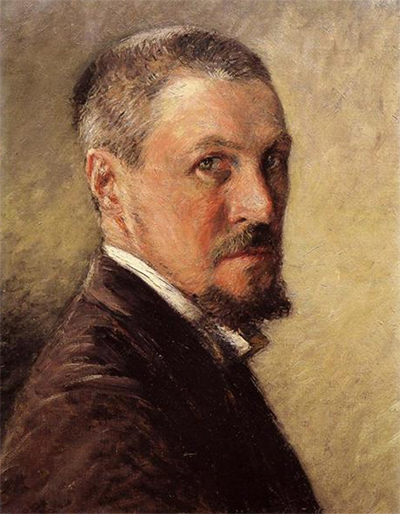Discover the significant contribution of Gustave Caillebotte to the Impressionist and Realist movements in this extensive biography of his life and career.
Much more than just a painter, Caillebotte was financially secure from a young age, thanks to money bequethed by relatives. This enabled him to pick and choose when he produced art and also allowed him to help to finance these growing art movements with his own financial backing. Typically new styles require help in order to establish themselves and at their very early stages help was required in order to promote the earliest Impressionist exhibitions.
Much of what we know about Gustave Caillebotte was uncovered during research into related artists, such is the interest in the Impressionist movement as a whole. His relative lack of prominence with art academics would normally have led to a dearth of information being available about his life and career but the strong relationships that he held with other notable artists like Monet, Manet, Degas and Renoir have ensured that we can discuss his life in great detail. In recent centuries he has also started to be more respected by historians in his own right, boasting several large biographical studies into his life in a variety of languages.
The Early Years of Gustave Caillebotte
The 19th of August, 1848, marked the birth of Gustave. He was born into an upper-class family which would prove key to getting the training required to make the most of his early artistic potential. Gustave's father was a particularly well-connected individual who also owned the family business which specialised in textiles. He had two other sons with his wife, Celeste. Gustave remained in the family home until the age of 18 and they regularly took vacations in the surrounding regions of Paris. It was on those trips that he experimented with his artistic urges, concentrating on drawing and painting. He earned a degree in Law and looked to be heading into that profession before being called up into the Franco-Prussian war.
The Artistic Career of Gustave Caillebotte
The family wealth would eventually pass onto Caillebotte Jnr in 1874, just after he had entered the École des Beaux-Arts. This prestigious institution would only accept students who displayed considerable talent from an early age and just to have studied here would immediately raise your profile as a young artist. Gustave initially set up a small studio in the family home and by this point had decided to pursue this as a career, rather than his earlier dalliances with law. The passionate young student would supplement his studies by building artistic connections during his social time, including notable names such as Edgar Degas and Giuseppe de Nittis. They persuaded him to visit the very first Impressionist exhibition, which he did in 1874.
The Latter Years of Gustave Caillebotte
In his later years, Caillebotte moved again - picking a beautiful spot just on the Seine river. This would prove an inspiration to a new series of work which would focus entirely on the different activities and sights that one might find along this busy river. He also spent time gardening and the fruits of his labour would also appear in several paintings around this time. For many years it was his contribution to promoting Impressionism that took most of the focus on his life, but in recent decades there has been a much bigger interest in his own paintings.
Gustave Caillebotte as a Collector
In inheriting the huge wealth of his father, Caillebotte was suddenly able to not only finance his artistic career, but also help to prop up those of others. He would become an integral part of the success of the Impressionist movement, not only with his paintings but also in how he was able to fund exhibitions in the early years. Later on, as their success grew, it was less necessary for him to provide so much financial support, but without it they may never have left quite the same legacy. Additional to this, he also purchased a large number of paintings from his colleagues and would later bequeth an extraordinary collection to the French State. This included works by the likes of Pissarro, Monet, Renoir, Sisley, Degas, Cezanne and Manet - essentially a who's who of the Impressionist movement minus just Caillebotte himself.




